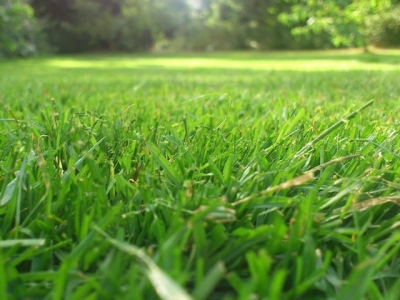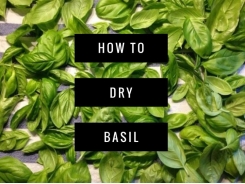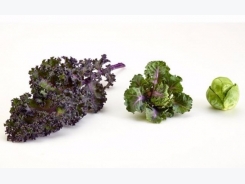Lawn Mowing

If you have lawn you are going to have to mow it from time to time, there's just no way of getting around it. Although the frequency of mowing will depend on the type of grass you plant.
Not only does mowing keep the grass short and neat, but it also helps to control weeds and it improves the general quality of grass growth, resulting in a better quality and healthier lawn.
Living in the 21st century, you have a lot of choice in terms of how you mow your lawn.
Before lawn mowers were invented just a few centuries ago, cutting the grass of large lawns was a team effort that involved many people. What they had to do was use scythes, which were long-handled tools with sharp curved blades, which they used to slice through the stems of the grass plants.
Then in the early 18th century someone came up with the idea of a lawn mowing machine. There were a variety of designs, some of which were pulled by either donkeys or horses, and others that were pushed by man.
The first cylinder blade, lawn-mowing machines were considered revolutionary in both America and England. But by the turn of the century, stream-powered and petrol- or gas-driven mowers were being manufactured for heavy-duty garden work. Then, as electricity became widely available, electric mowers were also invented. These new fangled designs utilized rotary blades instead of the cylinder blades that were originally used.
In the past few decades there has been quite a turn-around as people have begun to connect with the environment again. Whilst both gas-powered and electric mowers are widely available, there is a trend back to mowers that people can push. These are what we now call manual reel mowers, and guess what, they use cylinder blades!
When to mow your lawn
It doesn’t matter what sort of mower you are going to use to cut your grass, the best time to cut it is generally in the early evening when it isn’t too hot. Another factor to consider is dampness. If it has been raining a lot, then rather avoid mowing because the grass will be more susceptible to fungal diseases.
So, in a nutshell:
- Mow when conditions are cool. Heat puts unnecessary stress on the lawn.
- Mow when it is dry. Don’t mow after heavy rain and don’t mow early in the morning while everything is still covered in dew.
- Ideally wait until the sun is low in the sky, provided of course it hasn’t been raining.
How to mow a lawn
Exactly how you mow a lawn nowadays depends entirely on the type of lawn mower you have. Generally there will be detailed manufacturer’s instructions that will tell you exactly what to do – from assembling a box-packaged mower to making it work to achieve the grass height you want. Be sure to follow the manufacturer’s instructions.
But in more general terms you need to make sure that whatever mower you are using cuts the grass evenly, at the height you have chosen. Different types of grass should be cut to a height that suits that particular variety. One basic rule to remember is that you should never cut off more than 1/3rd of the blade of grass you are mowing. You also need to be a lot more careful when mowing cool-season grasses than the more hardy, warm-season grasses that you can trim very short.
If you have a grass catcher, empty it frequently. If you don’t, you will have to rake up the cuttings later.
Grass height
You don’t simply mow grass – it is a lot more scientific that that. Different grasses have to be cut to a different height. For example, research that has been carried out with Kentucky bluegrass shows that if the grass is mowed to a height of 2 inches instead of ¾ inch the root growth will be more than twice as much. But in general you can count on the fact that if lawn grass is cut too short the root system will be shallow and it may not thrive or even survive. This is because if you produce a shallow, weak root system, there is a much greater chance that your lawn will stress out in summer.
If you mow your lawn grass so that it is higher in summer, you will keep the temperature of the soil cooler and you will effectively keep more moisture in the soil.
Usually mowers come with recommendations in terms of grass height, so keep this in mind, and follow the instructions to the letter. For example, Bermuda should be cut the lowest height, at ½ inch whether you’re cutting high or low! Frescues, on the other hand, can be left growing to 2 inches, even if you are cutting high (remember a good lawn mower comes with blades that can be adjusted).
Different types of mowers
Today the basic choice is between mowers with a cylinder blade and those that have rotary blades. They are either gas-powered, powered by electricity, or, in the case of the mowers that utilize the old fashioned cylinder blades, manually. So it has now become a case of reel versus rotary.
Gas-powered mowers rely on some sort of fossil fuel to make them work. They do cut grass well, and you can rely on them to create a great lawn. But gas-powered mowers are not particularly kind to the environment. The problem is that they cause dangerous fumes that pollute the air.
Electric mowers are also effective mowers, but they do consume energy. They also have the disadvantage of only being able to be utilized within an area defined by the length of the power cable you are using.
Manual reel mowers don’t have engines and they don’t use fossil fuels. Providing you keep the blades of these mowers nice and sharp, they will cut the grass cleanly and neatly. They’re particularly useful in smaller yards, but if you want some exercise, go for one of these irrespective of the size of your yard.
There are a lot of different models with different numbers of blades, for example four, five, seven or ten. The more blades the mower has the better it will work, but the more you can expect to pay. They usually have both back and front wheels that can be adjusted to keep the mower level and at a specific height.
Different types of reel mowers have a recommended low-cut and a recommended high-cut height that will suit different types of grass. So you need to be sure you buy a model that will deal with whatever it is you have planted.
Most hand-push reel mowers also come with an optional grass catcher that takes away the need to run around raking up newly mown grass after you’ve done the mowing.
Lawn mowing tips
- Choose a lawn mower that you feel comfortable with.
- Read the manufacturer’s instructions to make sure you know how to operate the mower correctly.
- Maintain your mower at all times and make sure it is clean and in good working condition.
- Mow often to make sure that the grass is always at an optimum height.
- Don’t mow your grass when it is wet.
- Set the height of your mower to suit the grass you are cutting.
Có thể bạn quan tâm
Phần mềm

Phối trộn thức ăn chăn nuôi

Pha dung dịch thủy canh

Định mức cho tôm ăn

Phối trộn phân bón NPK

Xác định tỷ lệ tôm sống

Chuyển đổi đơn vị phân bón

Xác định công suất sục khí

Chuyển đổi đơn vị tôm

Tính diện tích nhà kính

Tính thể tích ao hồ




 Lawn Watering
Lawn Watering  Organic Pest and Disease Control
Organic Pest and Disease Control